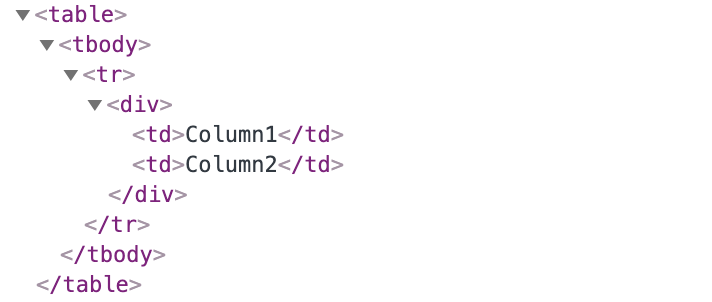
In the child component, we want to map through the list of items we have and output each item as a separate entity.If you have a inside a, you'll get a location and can do:, the doesn't have any props.location to access search and hash on. one way to fix it is to remove switch and just use routes, what switch does is it will return only one component so.
For example, let’s say we want to pass a list of items as props from a parent component to a child component. The problem is related to the React Fragment you are using inside variable render routes <> Switch that you have wrapped only works with the first level of components directly under it. We should keep React 15 compatibility and check if React.Fragment is available.Now, we've successfully installed our router, let's start using it in the next section.
#Fragment in react install#
To install it, you will have to run the following command in your terminal: yarn add react-router-dom. When mapping a list of items, you still need to make use of keys the same way as before. And to enable it in our project, we need to add a library named react-router. So we could write the Columns component as follows.
We can make use of fragments withSo basically we use React.Fragment where we would normally use a wrapper div.

You may be looking for a good reason to use Fragments instead of the container div you have always been using. Let’s start by understanding the problem that Fragments are meant to solve.
#Fragment in react how to#
So instead of doing this: class Countries extends React.Component Question: Is a fragment better than a container div? Developers design views for each state of an application, and React updates and renders components when data changes. What Is React Fragment and How To Use It The problem.
The empty JSX tag <> is shorthand forThe way out of that is to make use of a wrapper div or span element that acts as the enclosing tag. Grouping elements in Fragment has no effect on the resulting DOM it is the same as if the elements were not grouped. React fragments are introduced in version 16. What is a React Fragment React Fragment is a react component which helps us to return the multiple child elements without using the extra dom nodes. If you have ever tried to return more than one element, you know that you’ll will be greeted with this error: Syntax error: Adjacent JSX elements must be wrapped in an enclosing tag. React fragments let you group a list of children without adding extra nodes to the DOM because fragments are not rendered to the DOM. In this tutorial, we are going to learn about the usage of fragments in react apps. You likely forgot to export your component from the file its defined in. × React.createElement: type is invalid - expected a string (for built-in components) or a class/function (for composite components) but got: undefined. It used to be that React components could only return a single element. The problem seems to be with the React.Fragment call. These are new and really exciting concepts that came out of the React 16 release, so let’s look at them closer and get to know them. React 16 came with those goodies and much more, but In this post, we’ll be looking at the rendering power it also introduced - namely, the ability to render children using Fragments and Array Components. What comes to your mind when React 16 comes up? Context? Error Boundary? Those are on point.


 0 kommentar(er)
0 kommentar(er)
